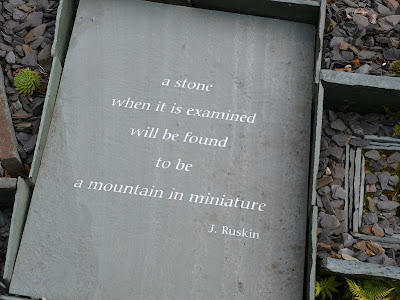At the start
of Wagner’s Tannhäuser,
after the orgiastic dance sequence insisted upon by the Jockey Club for its
first performance in Paris, we find the poet sickening of the sensual pleasures
offered in Venusberg – resisting Venus’s charms he elects to return to the
world of men. Far from the world of men, in the grounds of his palace at Linderhof, did King Ludwig II a
subterranean pleasure dome decree – in the form of an underground cave of stalactites
surmounting a small artificial lake. In fact everything about this chamber was
artificial – conceived and designed between 1876 and 1877, the Venus Grotto is
an immersive stage setting constructed from canvas, cement and steel – its coloured
lights, some reflecting the exact shade of Capri’s famous Blue Grotto, were
powered by a series of 24 dynamos. The grotto’s air temperature was kept at a
manageable level by the furnaces built into the cave’s walls. Have I missed
any of its wonders? Oh yeah, the golden half-shell boat and throne from which
Ludwig could admire his underground realm of the senses – the ceramic garlands and
the artificial waterfall – and the rugged limestone entrance that was also the
work of artifice rather than nature.
The Venus
Grotto is an early media device – not surprisingly its conception coincides
precisely with Edison’s invention (one wants to ‘discovery’ of so fundamental a device) and also with the raising of Wagner’s Festspielhaus in Bayreuth. A
cinematic experience before such a thing had coalesced around the moving image,
the Venus Grotto is not a spectacle that King Ludwig was prepared to share:
we note again the womb-like warmth and wetness of the grotto itself, his own
refined sense of ‘spirituality’ as opposed to what he considered the grosser sensations of sensual
love, and finally that highly suggestive vertical slit in the rocks through
which he entered his pleasure chamber. It was perhaps an unconscious
arrangement that allowed a man, whose own birth at Nymphenberg was witnessed by
selected members of the Bavarian court, to ensure that the first-born really was
the next king of Bavaria, to return to the womb in nobody’s company but his
own.
Pictured
above from top to bottom: the entrance to the Venus Grotto in the grounds of Linderhof,
the main chamber; stalactites and garlands; another view of main chamber showing a little more detail of A Heckel’s
mural depicting Tannhäuser
in Venusberg; and a side grotto. Photographs by roving shutterbug Kitty Keen as
KH was incapable at the time, having succumbed to a mild case of Stendahl Syndrome.
See also:
















